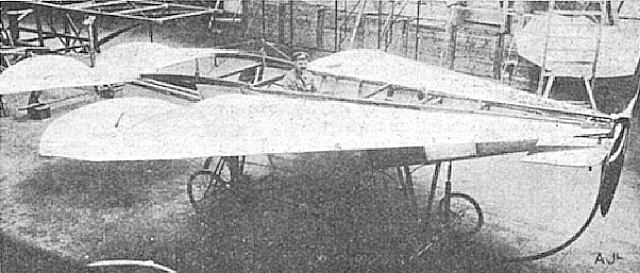For the two static ports, first we rivet in the right side static port, which is just like a regular pop-rivet but with a big head on it.
And then the left side. After the static ports are pop-riveted on, the mandrels inside the static port-rivets are driven out with a small punch and hammer. I followed other builders' advice and took a block of wood, drilled a hole in it and had my assistant, the lovely but unnamed CFO, hold it against the inside skin so I could knock the leftover mandrel piece out the other side without denting the skin. Both punches I have were too big to fit in the hole so I just used an old mandrel and it worked fine.
After the mandrels are driven out I installed the static port tubing. The clear tubing appears to be the same stuff you'd find in a fish aquarium.
Tubing for both sides is routed up the large frame hoop and connected in the middle with a T fitting. It's a bit different from earlier RV-12's, which had the tube from the right side port go all the way over to the left side port. The difference is related to a recent change in the design of the avionics system. The static port(s) tubing, both 1/8-inch the and 1/4-inch, are then secured with zip ties as shown:
Not sure if it's needed, but RTV silicone was used to seal the tubing to the static ports. I had some left over from when I swapped the water pump in my truck a few years ago. The stuff's just as messy now as it was then.
So I came up with a alternative plan involving three pieces of electrical tape:
First I pulled the harness out of the way and wrapped the small piece of tape over the edge:
And then wrapped two more pieces of electrical tape over the first one like so:
It seemed like a good idea to do it for the front as well:
The problem is that electrical tape just isn't all that sticky and could come off on its own one day. As long as it stays on though, it'll protect the harness from chafing at the ends of the J channel. I'll just add that the sheath on the harness seems to be pretty chafe-resistant and the wires inside it are sheathed in Teflon. Once the harness is connected to whatever it is that it gets connected to, I should be able to add in just enough slack so that it barely touches the fore and aft edge(s) of the J- channel.












No comments:
Post a Comment